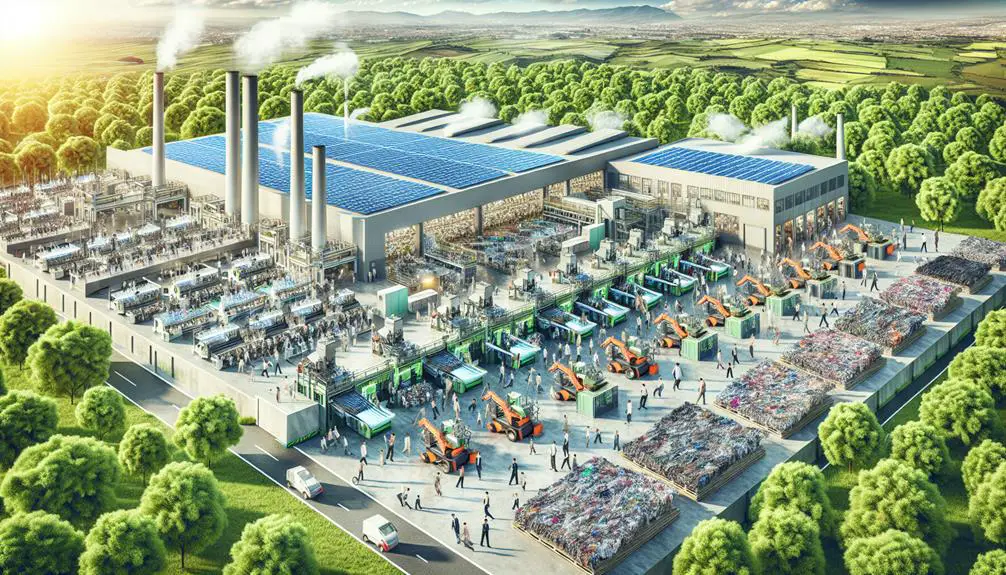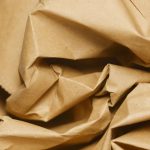You might not know that over 92 million tons of textile waste are generated each year globally, but innovative solutions are emerging to tackle this issue head-on. From advanced recycling technologies that break down fabrics into reusable fibers to zero-waste design techniques that minimize material scraps, the textile industry is undergoing a transformative shift. Upcycling and digital pattern making are also playing pivotal roles in reducing waste. Curious about how these practices are reshaping eco-conscious fashion and what other groundbreaking methods are on the horizon? Let's explore these innovations further.
Table of Contents
Key Takeaways
- Advanced textile recycling methods extract basic fibers from fabric waste for new materials.
- Upcycling transforms discarded textiles into high-quality products, minimizing waste.
- Zero-waste design utilizes every piece of fabric in production, reducing waste.
- Digital pattern making optimizes garment patterns to minimize fabric waste.
- Biodegradable textiles decompose naturally, reducing environmental impact.
Recycling Technologies
Recycling technologies have revolutionized the way we handle fabric waste by transforming discarded materials into reusable resources. You can now leverage advanced textile recycling methods to reduce the environmental impact of the fashion and textile industries. These innovative technologies break down fabric waste into its basic fibers, allowing you to create new materials that are just as strong and versatile as the originals.
By utilizing mechanical and chemical recycling processes, you can reclaim valuable fibers from various types of fabrics, including cotton, polyester, and blends. Mechanical recycling involves shredding the textiles into fibers, which are then spun into yarns or used for non-woven products. This method is particularly effective for natural fibers.
On the other hand, chemical recycling dissolves the fabric waste to extract polymers, which can be repolymerized into new fibers. This technique is ideal for synthetic materials and complex blends.
Incorporating these textile recycling technologies into your production process not only conserves resources but also reduces the need for virgin materials. By mastering these methods, you contribute to a more sustainable industry, lower your carbon footprint, and turn waste into valuable assets.
Upcycling Practices
Beyond recycling technologies, you can elevate fabric waste reduction efforts through innovative upcycling practices that transform discarded textiles into valuable, high-quality products. Creative repurposing offers a compelling solution by turning waste into fashionable items, supporting sustainable fashion. By engaging in upcycling, you not only minimize waste but also promote ethical production, ensuring that discarded materials find new life.
Upcycling allows you to transform old garments into trendy accessories, home decorations, or even new clothing pieces. It's an approach that champions both waste reduction and innovation. When you practice upcycling, you contribute to a circular economy, where materials are continually reused rather than being discarded.
Here's a quick guide to common upcycling practices:
| Upcycling Practice | Benefits | Examples |
|---|---|---|
| Garment Reconstruction | Extends life of textiles | Turning jeans into bags |
| Patchwork Quilting | Uses small fabric pieces | Creating unique blankets |
| Accessory Creation | Adds value to scraps | Making jewelry from fabric scraps |
Zero-Waste Design
Zero-waste design ensures that every piece of fabric is utilized, eliminating waste entirely from the production process. By strategically planning garment patterns, you contribute significantly to sustainable fashion by maximizing each cut of fabric. This approach not only reduces waste but also challenges you to think creatively about design.
Mastering zero-waste design involves meticulous planning and a deep understanding of fabric properties. You must visualize the entire garment layout, considering how every piece fits together like a puzzle. This method demands precision and innovation, pushing the boundaries of traditional fashion design. By adopting zero-waste techniques, you're not just reducing fabric waste; you're also creating unique, often one-of-a-kind pieces that stand out in a crowded market.
Incorporating zero-waste design into your practice demonstrates a commitment to sustainable fashion and waste reduction. It shows that you're willing to go the extra mile to protect the environment. As consumers become more eco-conscious, your dedication to zero-waste principles can set you apart, offering a compelling narrative that resonates with those who value sustainability.
Embrace zero-waste design, and you'll contribute to a more sustainable and innovative future in fashion.
Digital Pattern Making
Digital pattern making revolutionizes the fashion industry by leveraging technology to create precise and efficient garment patterns. When you embrace digital design, you're not just modernizing your workflow; you're also playing a pivotal role in waste reduction.
Traditional pattern-making methods often result in excessive fabric waste, but digital tools allow you to optimize every inch of material, minimizing offcuts and leftovers.
By using specialized software, you can draft, modify, and perfect patterns with a level of accuracy that's hard to achieve manually. These programs let you visualize how pieces will fit together, ensuring a more efficient use of fabric right from the start. Plus, you can easily make adjustments and see the immediate impact on fabric usage, allowing for instant optimization.
Another significant advantage is the ability to share and collaborate on designs digitally. This reduces the need for physical samples and prototypes, cutting down on both material waste and transportation costs.
Sustainable Materials
You'll find that sustainable materials are essential for reducing fabric waste.
Consider recycled fabric technologies, eco-friendly dye methods, and upcycled textile innovations as key strategies.
These approaches not only minimize waste but also promote a greener fashion industry.
Recycled Fabric Technologies
Recycled fabric technologies are transforming the textile industry by turning waste into valuable, sustainable materials. Through innovative textile regeneration and fabric repurposing, you're witnessing a revolution where discarded textiles are given a new lease on life. This isn't just about reducing waste; it's about creating a closed-loop system that supports sustainable fashion. By mastering recycled textile processes, you can notably lower the environmental footprint of textile production and contribute to a more sustainable future.
Imagine the potential when you harness advanced technologies like mechanical recycling, which shreds old garments into fibers that can be spun into new yarns. Chemical recycling takes it a step further by breaking down fabrics at the molecular level, allowing you to create high-quality materials that rival virgin textiles. These processes aren't only efficient but also versatile, enabling you to transform a variety of waste fabrics into new, usable resources.
Eco-Friendly Dye Methods
While traditional dyeing methods often involve harmful chemicals, eco-friendly dye techniques offer a sustainable alternative that reduces environmental impact to a great extent. By opting for natural pigments derived from plants, minerals, and even insects, you can minimize the introduction of toxic substances into ecosystems. These natural pigments not only provide a rich palette of colors but also guarantee that the waste generated is biodegradable.
Moreover, waterless dyeing is revolutionizing the textile industry. Conventional dyeing processes can consume vast amounts of water, contributing to scarcity and pollution. Waterless dyeing techniques, such as using supercritical CO2 as a solvent, eliminate the need for water altogether. This method drastically reduces chemical use and energy consumption, making it a highly efficient and sustainable option.
You should also consider the advancements in digital printing, which allow precise application of dyes with minimal waste. This technique guarantees that only the needed amount of dye is used, further reducing excess and runoff.
Upcycled Textile Innovations
Building on the momentum of eco-friendly dye methods, exploring upcycled textile innovations further amplifies your commitment to sustainable materials. By embracing sustainable fashion, you actively contribute to reducing the environmental footprint of the fashion industry. Upcycled textiles, made from reclaimed fabrics, offer a powerful way to transform waste into high-value products.
Textile reclamation is a critical process in this endeavor. It involves collecting discarded fabrics and repurposing them into new, stylish garments. You're not just saving materials from landfills; you're also fostering a circular economy where waste is minimized, and resources are continuously reused. This practice not only conserves raw materials but also reduces the demand for energy-intensive manufacturing processes.
Upcycled textile innovations are more than just a trend; they're a movement towards responsible fashion. By choosing upcycled products, you support designers and brands that prioritize sustainability. This choice reflects a deeper understanding of the environmental impact of your wardrobe and a commitment to making a difference.
Fabric Scraps Utilization
Transforming fabric scraps into valuable products can greatly reduce textile waste and promote sustainability. One effective method is scrap quilting, where you piece together small fabric remnants to create beautiful, functional quilts. This technique not only minimizes waste but also allows you to craft unique, personalized items.
By mastering scrap quilting, you can turn what might seem like useless scraps into cherished heirlooms or practical household items.
Beyond quilting, fabric art offers a myriad of possibilities for utilizing fabric scraps. You can create stunning wall hangings, intricate collages, or even wearable art. Fabric art lets you experiment with textures, colors, and patterns, pushing the boundaries of traditional textile use.
Each piece becomes a tribute to your creativity and resourcefulness.
To truly excel in fabric scraps utilization, you should explore various techniques and continually innovate. Think about combining different materials or integrating unexpected elements into your projects.
Eco-Friendly Dyeing
Exploring eco-friendly dyeing methods can further enhance your fabric scrap projects by adding vibrant, sustainable colors without harming the environment. One effective approach involves using natural pigments. Derived from minerals and plants, these pigments offer a rich palette while avoiding synthetic chemicals that pollute waterways. By opting for natural pigments, you're not just coloring fabric; you're making a conscious choice to support a healthier planet.
Another innovative technique is waterless dyeing. Traditional dyeing methods consume vast amounts of water, contributing to waste and pollution. Waterless dyeing, on the other hand, employs advanced technology to apply color without using a single drop of water. This method isn't only eco-friendly but also energy efficient, reducing the overall environmental footprint of your projects.
Additionally, plant-based colorants are gaining popularity for their sustainability. These dyes are extracted from renewable sources like fruits, vegetables, and flowers. They provide a spectrum of hues while ensuring that your fabric scraps are colored in the most natural way possible. Coupled with energy-efficient processes, plant-based colorants can notably diminish the environmental impact of your dyeing activities.
Circular Fashion
Circular fashion rethinks the traditional linear model of 'take, make, waste' by designing clothing with the end of its lifecycle in mind. You're engaging in a circular economy when you buy garments made to be reused, repaired, or recycled. This approach revolutionizes the fashion industry, pushing it towards sustainability trends and reducing fabric waste.
Instead of discarding worn-out clothes, circular fashion encourages textile recycling. Imagine your old jeans being transformed into new fabric or even insulation for homes. By participating, you're ensuring that resources stay in use longer, reducing the demand for virgin materials.
Here's a quick comparison to grasp the concepts better:
| Traditional Fashion | Circular Fashion |
|---|---|
| Linear lifecycle | Circular lifecycle |
| High waste levels | Minimal waste |
| Single-use items | Reusable designs |
| Resource-intensive | Resource-efficient |
| Short-term mindset | Long-term mindset |
Biodegradable Textiles
Biodegradable textiles offer a vital solution to the issue of fabric waste by breaking down naturally and returning to the environment without leaving harmful residues. You'll find these eco-friendly materials are most effective when crafted from natural fibers like cotton, wool, and hemp. These fibers decompose more efficiently compared to synthetic counterparts, making them a superior choice for reducing waste.
When selecting compostable textiles, you're not just choosing a fabric; you're making a mindful decision to support sustainability. These textiles decompose in composting conditions, turning into valuable organic matter that enriches the soil. Imagine the impact of your clothing choices contributing to a healthier planet, rather than piling up in landfills.
To fully harness the benefits of biodegradable textiles, it's essential to understand their lifecycle. From sourcing natural fibers to ensuring proper disposal, every step matters. By educating yourself and others about compostable textiles, you can drive demand and encourage the industry to prioritize sustainability.
Embrace biodegradable textiles and you'll be part of a movement that's transforming fashion into a force for good. By integrating these materials into your wardrobe, you're paving the way for a future where fashion and environmental responsibility go hand in hand.
Frequently Asked Questions
How Can Consumers Contribute to Fabric Waste Reduction in Their Daily Lives?
You can contribute to fabric waste reduction by supporting recycling initiatives and choosing sustainable fashion. Buy quality over quantity, mend and repurpose old clothes, and donate unwanted items to minimize your environmental impact.
What Are Some Common Barriers to Implementing Fabric Waste Reduction Strategies?
You'll face barriers like high costs and limited resources when implementing fabric waste reduction strategies. However, solutions include investing in sustainable technologies and promoting consumer awareness to overcome these challenges effectively.
How Does Fabric Waste Impact the Environment Beyond Landfills?
Imagine a ripple effect: fabric waste's environmental impact stretches beyond landfills, causing pollution. You'll see water contamination and harm to wildlife, highlighting the urgent need to address these pressing issues for a healthier planet.
Are There Any Government Incentives for Companies Reducing Fabric Waste?
Yes, there are government incentives encouraging corporate responsibility in reducing fabric waste. You can find tax breaks, grants, and subsidies designed to support businesses that adopt sustainable practices and minimize their environmental footprint.
What Role Do Fashion Brands Play in Educating Consumers About Fabric Waste?
Did you know 85% of textiles go to landfills annually? Fashion brands must embrace brand responsibility by using marketing strategies to boost consumer awareness and promote sustainable practices, ensuring you're informed and inspired to make eco-friendly choices.
- Does Chiffon Fabric Stink - July 15, 2025
- Does Chiffon Fabric Affect the Economy - July 15, 2025
- Does Cotton Fabric Have a Nap - July 15, 2025






